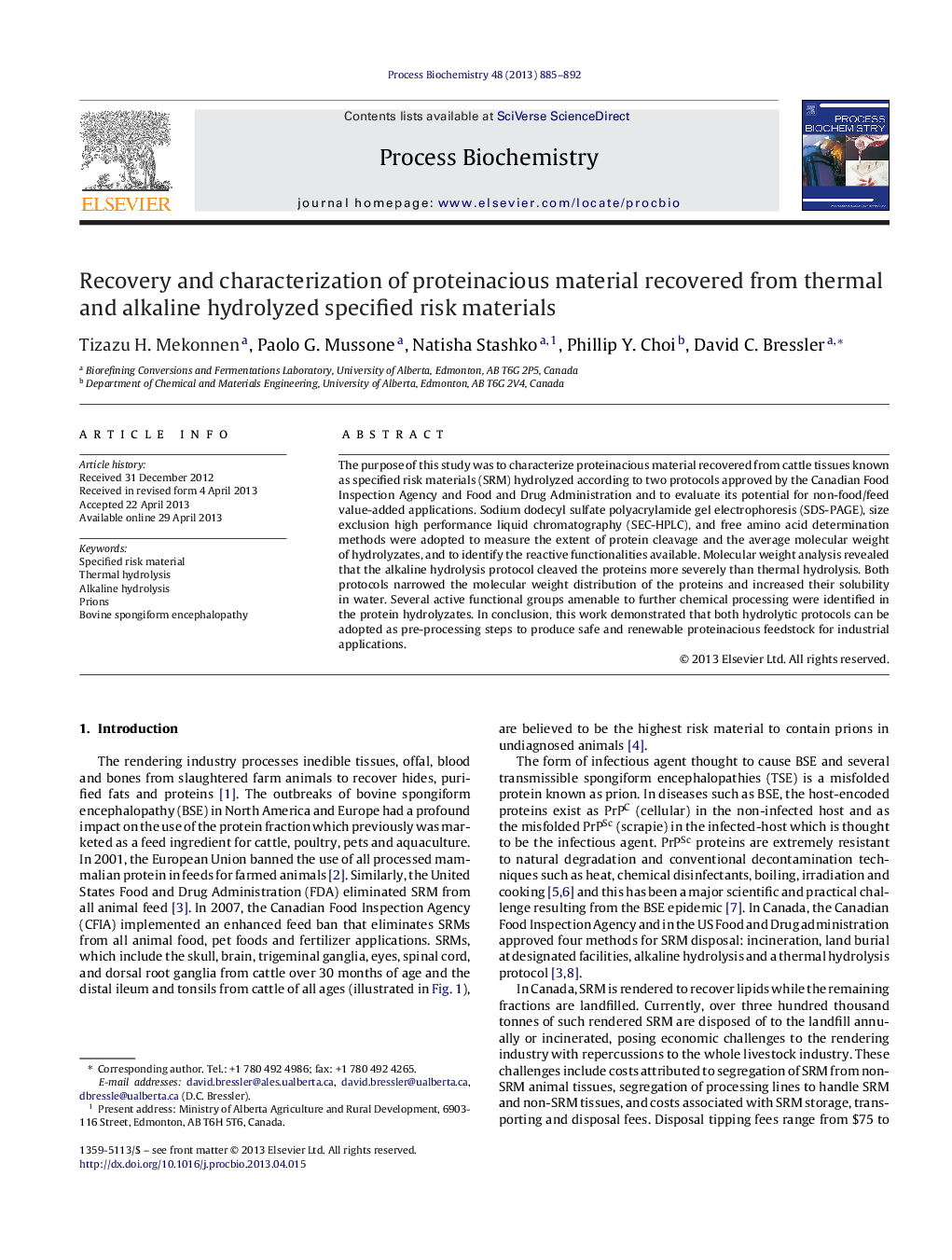| Article ID | Journal | Published Year | Pages | File Type |
|---|---|---|---|---|
| 34739 | Process Biochemistry | 2013 | 8 Pages |
•We characterized hydrolysates of cattle tissues known as specified risk materials.•We measured protein cleavage as function of hydrolysis protocol.•We identified the reactive functionalities available.•We suggested possible industrial applications.
The purpose of this study was to characterize proteinacious material recovered from cattle tissues known as specified risk materials (SRM) hydrolyzed according to two protocols approved by the Canadian Food Inspection Agency and Food and Drug Administration and to evaluate its potential for non-food/feed value-added applications. Sodium dodecyl sulfate polyacrylamide gel electrophoresis (SDS-PAGE), size exclusion high performance liquid chromatography (SEC-HPLC), and free amino acid determination methods were adopted to measure the extent of protein cleavage and the average molecular weight of hydrolyzates, and to identify the reactive functionalities available. Molecular weight analysis revealed that the alkaline hydrolysis protocol cleaved the proteins more severely than thermal hydrolysis. Both protocols narrowed the molecular weight distribution of the proteins and increased their solubility in water. Several active functional groups amenable to further chemical processing were identified in the protein hydrolyzates. In conclusion, this work demonstrated that both hydrolytic protocols can be adopted as pre-processing steps to produce safe and renewable proteinacious feedstock for industrial applications.
